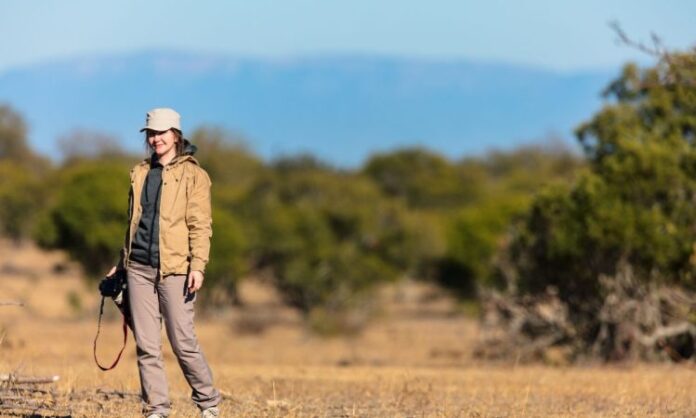Introduction to Tanzania Safaris
Dreaming of endless savannahs, roaring lions, and sunsets that melt into the horizon? That’s Tanzania for you—a safari paradise unlike anywhere else on Earth. From the dramatic Serengeti plains to the lush Ngorongoro Crater, Tanzania is where nature puts on its grandest show.
Why Tanzania is a Top Safari Destination
Tanzania is one of the few countries that still feel untouched. Its commitment to preserving its wild landscapes, combined with a mind-blowing diversity of wildlife, makes it a dream destination for every kind of traveler. Add to that the warm hospitality of its people and a deep-rooted culture, and you’ve got more than just a vacation—you’ve got an adventure of a lifetime.
A Quick Look at Tanzania’s Geography and Wildlife Diversity
Located in East Africa, Tanzania Safaris boasts over 30% of its landmass as protected areas. It’s home to the famed “Big Five”—lion, elephant, leopard, buffalo, and rhino—as well as 1,100+ bird species, cheetahs, giraffes, wildebeests, crocodiles, and more.
National Parks and Game Reserves
- Serengeti National Park
- The crown jewel of Tanzanian safaris.
The Great Migration
Every year, over 1.5 million wildebeests, accompanied by zebras and gazelles, make a circular trek in search of greener pastures. It’s nature’s version of a blockbuster film.
Best Time to Visit Serengeti
For the migration: June–July (river crossings) and October–November (return south). For calving: January–February.
Ngorongoro Crater
A volcanic caldera turned wildlife sanctuary.
Wildlife Viewing in the Crater
You can spot all Big Five here in one day—yes, it’s that packed. Think of it as an animal amphitheater.
Cultural Experience with the Maasai
The Maasai live harmoniously around the crater, and a visit offers insights into their centuries-old way of life.
Tarangire National Park
Elephant Paradise
Famous for its massive elephant herds and ancient baobab trees. Best visited during the dry season when animals congregate around the Tarangire River.
Lake Manyara National Park
Tree-Climbing Lions and Flamingos
Yes, lions do climb trees here. And the pink horizon of flamingos across the lake? Instagram-worthy to say the least.
Selous Game Reserve (Now Nyerere National Park)
Remote and wild. Boat safaris on the Rufiji River are a unique experience, offering sightings of hippos and crocs up close.
Ruaha National Park – Tanzania’s Hidden Gem
Less crowded and more rugged. A treat for seasoned safari-goers who want solitude with their adventure.
Types of Safaris in Tanzania
Classic Game Drive Safaris
The go-to option. Early morning and late afternoon drives offer the best chances to catch predators in action.
Walking Safaris
Feel the earth under your boots. Led by expert guides, these safaris give you a ground-level view of nature.
Balloon Safaris
Float above the Serengeti at sunrise. Peaceful, magical, and unforgettable.
Luxury Safaris
Think private lodges, gourmet meals, plunge pools, and sundowners with a view.
Budget and Group Safaris
Ideal for travelers who want the experience without breaking the bank. Shared vehicles and group campsites make it affordable.
Tanzania Safari Seasons and Best Time to Visit
Dry Season (June to October)
Best time for wildlife viewing. Fewer mosquitoes, better visibility, and animals gather around water sources.
Wet Season (November to May)
Lush, green landscapes and fewer tourists. Great for birding and baby animals.
Tanzania’s Big Five and Beyond
What Are the Big Five?
- Lion
- Elephant
- Leopard
- Buffalo
- Rhino
These were historically the hardest animals to hunt, but now they’re the stars of your safari photos.
Other Iconic Wildlife
- Cheetahs sprinting through the plains
- Giraffes grazing elegantly
- Hyenas laughing in the night
Over 500 bird species including lilac-breasted rollers and African fish eagles
Cultural Encounters on Safari
Visiting Maasai Villages
Learn about their traditional dress, dances, and community life. It’s a powerful reminder of the harmony between people and wildlife.
Meeting the Hadzabe Bushmen
One of the last remaining hunter-gatherer tribes. A walk with them feels like stepping back in time.
Safari Planning Tips
How to Choose a Safari Operator
Look for licensed companies with excellent reviews, knowledgeable guides, and good safety records. Don’t just go for the cheapest.
What to Pack for a Tanzania Safari
- Neutral-colored clothes
- Binoculars
- Camera with extra batteries
- Insect repellent
- Sunscreen and hat
- Comfortable walking shoes
Health, Safety, and Travel Insurance
Vaccinations, anti-malaria medication, and comprehensive insurance are a must. Also, follow your guide’s instructions—this isn’t a zoo.
Conservation and Responsible Tourism
Community-Based Tourism
Choose lodges and tour operators that reinvest in local communities. Your safari should benefit the people who protect the land.
Wildlife Conservation Initiatives
Support projects that combat poaching and preserve habitats. Every traveler plays a role.
Conclusion
A safari in Tanzania is more than just a trip—it’s a life-changing journey into the wild heart of Africa. Whether you’re watching the Great Migration thunder across the plains, exchanging smiles with Maasai villagers, or floating silently in a hot air balloon, every moment in Tanzania feels like magic. So, pack your bags, charge your camera, and get ready for an adventure you’ll never forget.
